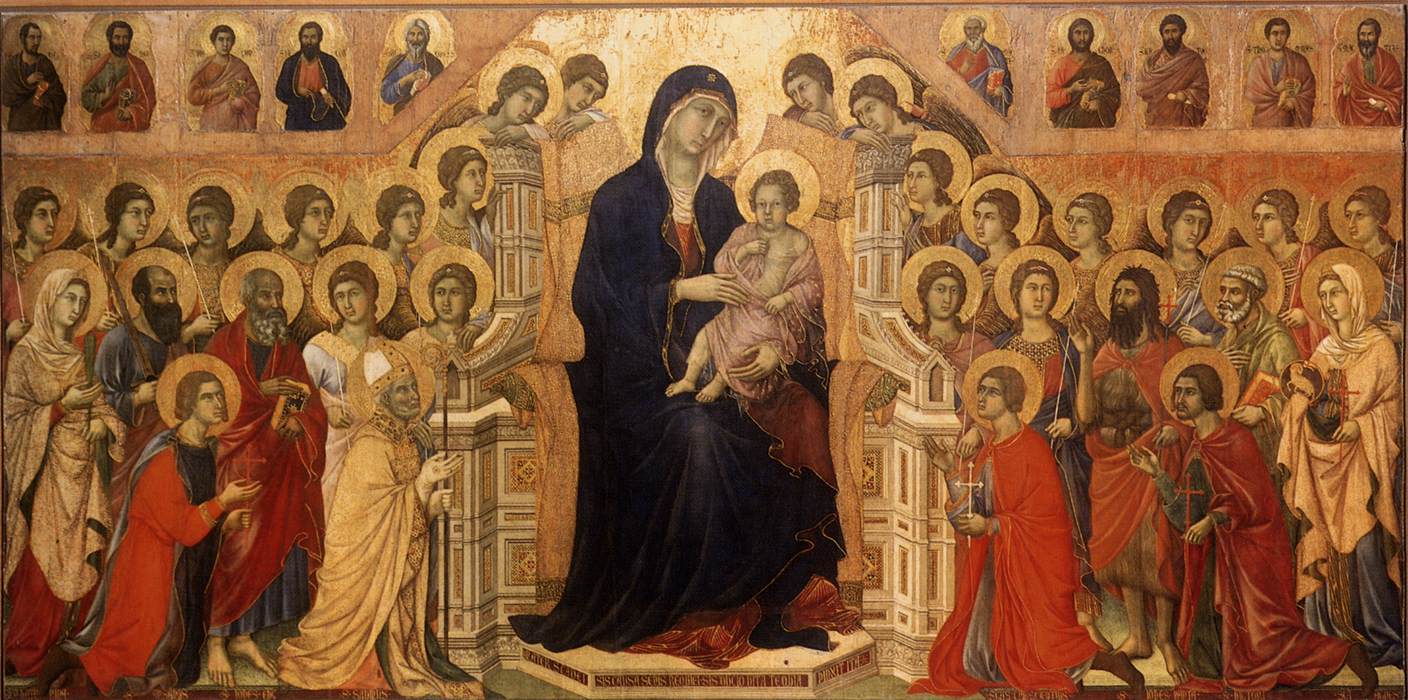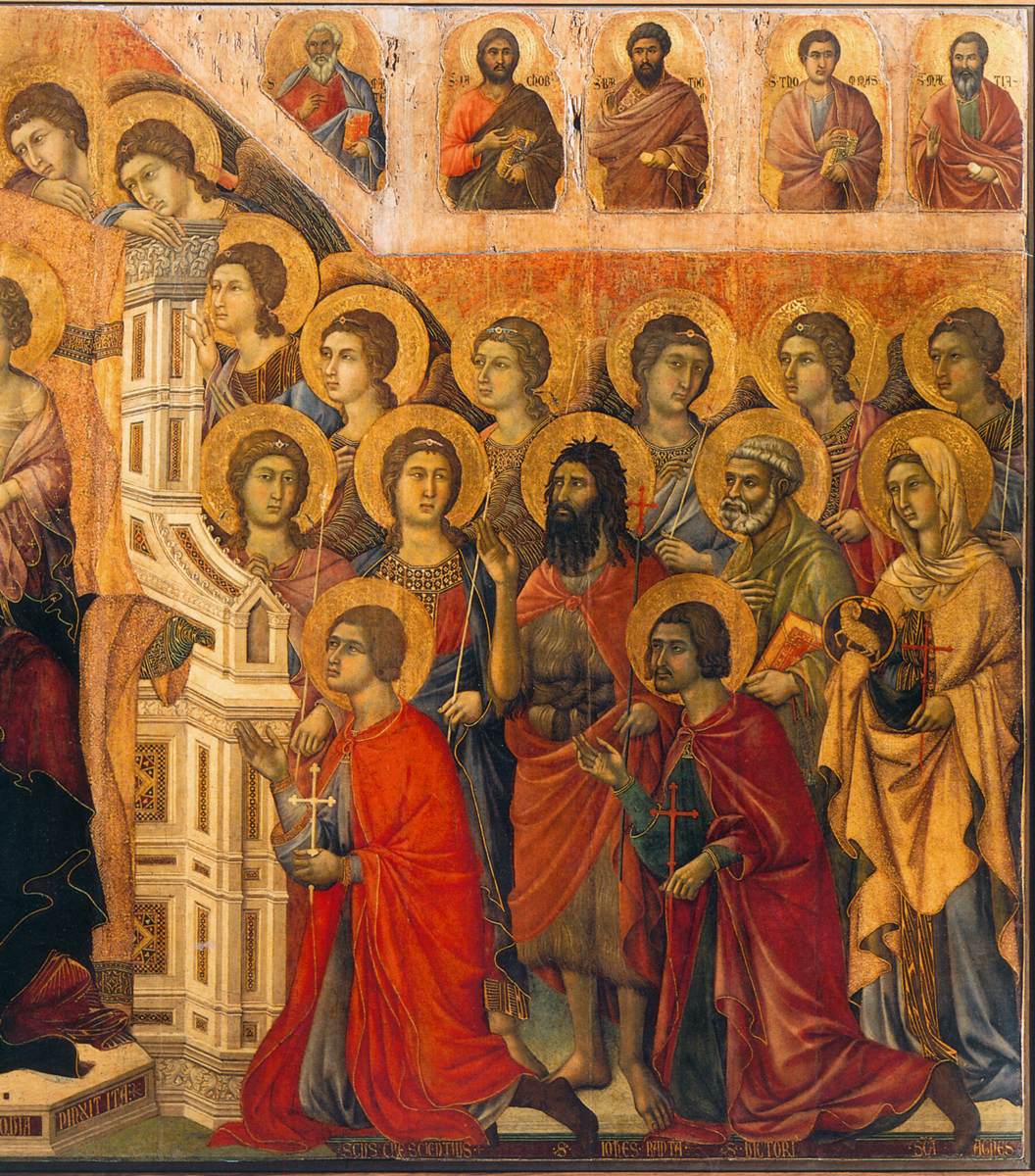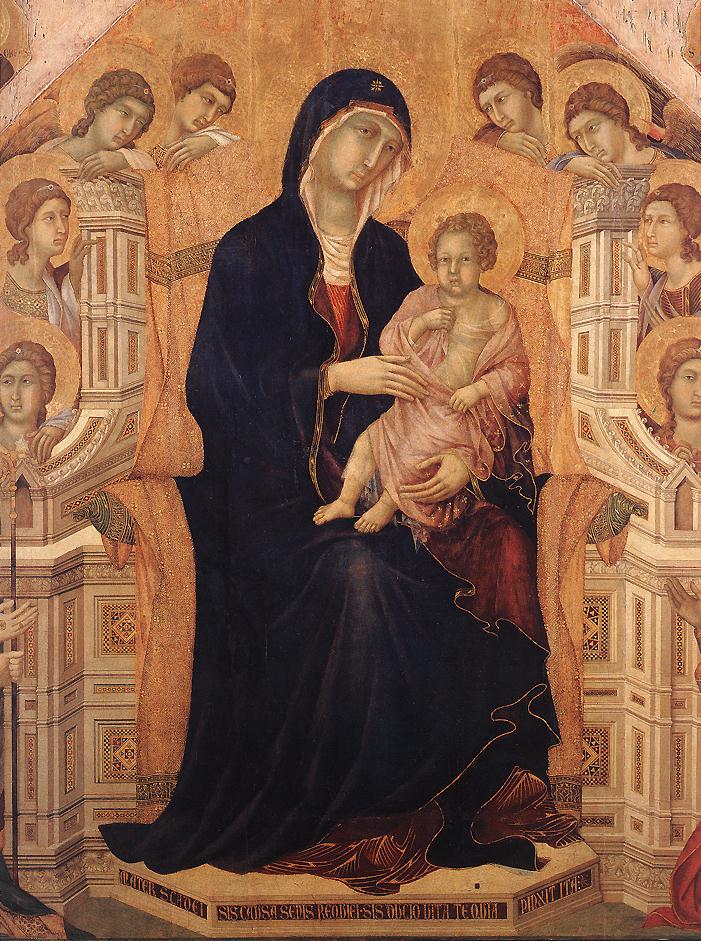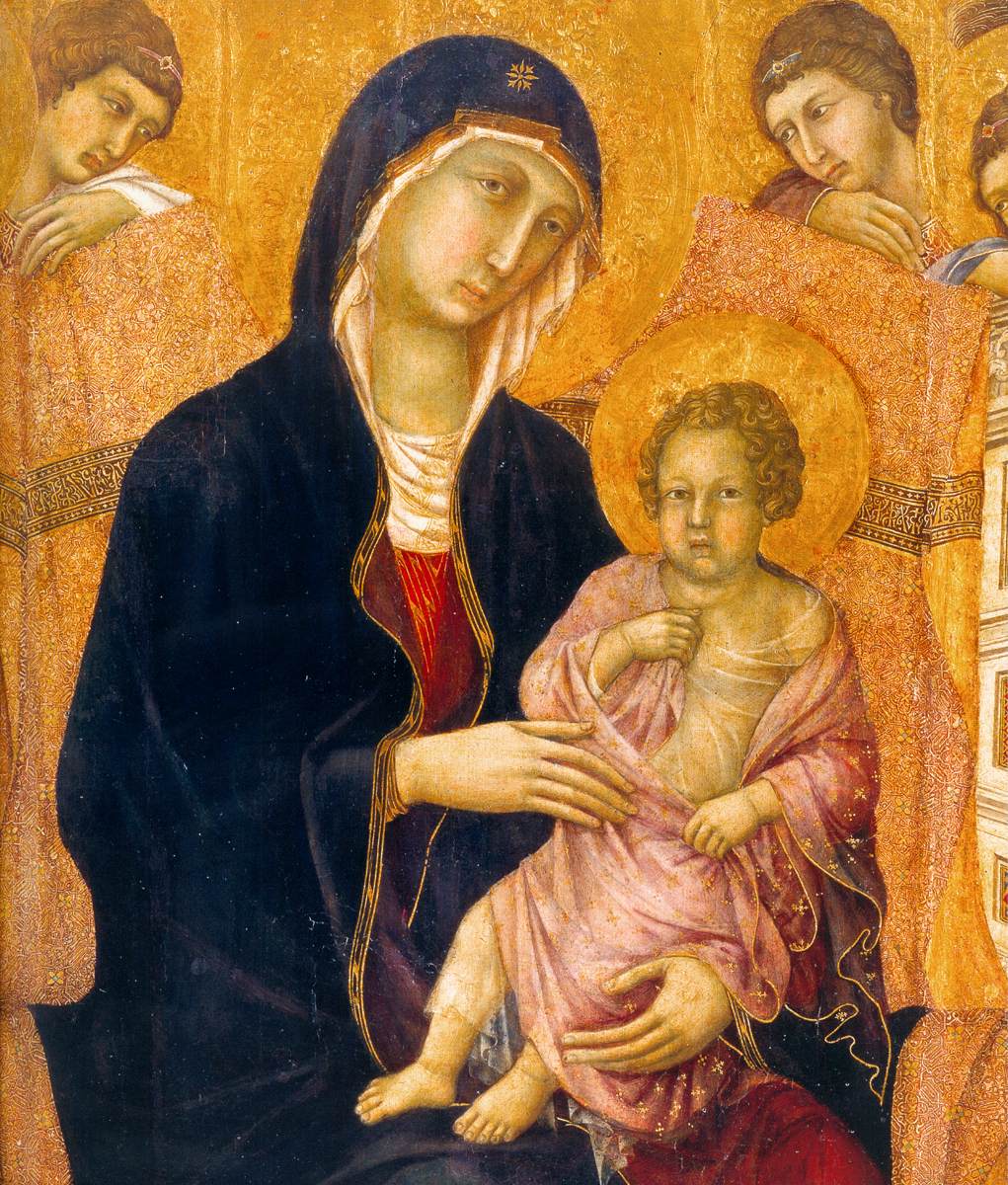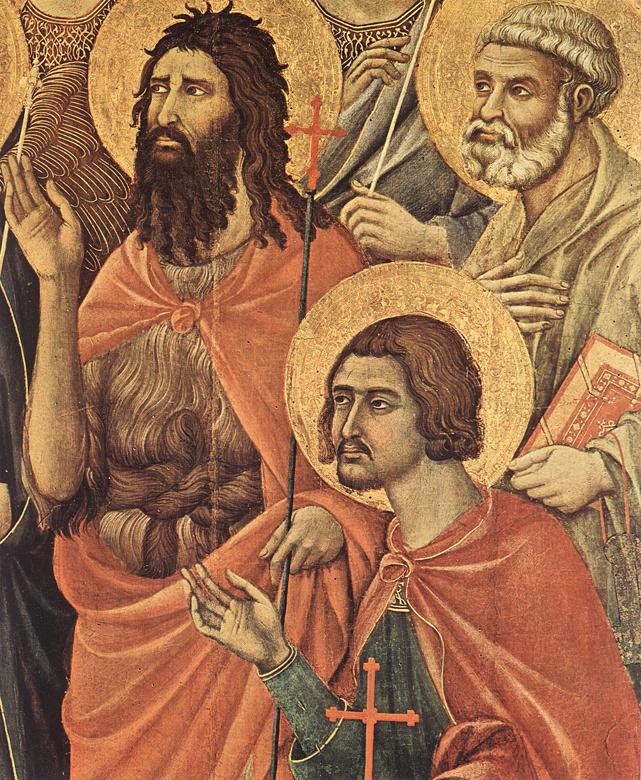Duccio di Buoninsegna was the first great Sienese painter, and he stands in relation to the Sienese School as Giotto does to the Florentine; yet without the powerful naturalism that makes the art of Giotto so revolutionary. Rather, Duccio sums up the grave and austere beauty of centuries of Byzantine tradition and infuses it with a breath of the new humanity which was being spread by the new Orders of SS. Francis and Dominic.
Duccio is first recorded in 1278 and 1279, working for the Commune, and then in 1280 he was heavily fined for an unspecified offence, probably political: it was the first of many fines to be inflicted on him, but the others were all much smaller. In 1285 a large Madonna was ordered from him for the Florentine church of Sta Maria Novella: this was almost certainly the Rucellai Madonna (now in the Uffizi), but the picture is sometimes called a work of the 'Master of the Rucellai Madonna', and Vasari, in one of his patriotic moods, ascribed it to the Florentine Cimabue. The picture was probably painted in Siena, where Duccio is recorded at intervals 1285-99, when he was again fined for refusing to swear fealty to the Capitano del Popolo, a civic official. In 1296 and 1297, however, a 'Duche de Siene' is recorded in Paris, which may explain the Gothic influence in some of his works and in those of his followers.
In 1302, in Siena, he was fined again, probably for debt, but he also received the commission to paint a Maestà for Siena Town Hall, now lost. He was also fined again, this time for refusing military service, and yet again for some activity apparently connected with sorcery. This last accusation cannot have been very serious, since in 1308 Duccio achieved the consummation of his career with the contract for the huge Maestà for the High Altar of the Cathedral. The work was finished in 1311 and carried in solemn procession from his workshop to the Cathedral. Most of it is still in Siena (Cathedral Museum), but a few small panels are missing, and the other panels, all small ones from the predelle, are in several foreign museums.
In its original form the Maestà proper - that is, the Enthroned Madonna and Child surrounded by Saints and Angels - occupied the whole of the main panel facing the congregation. Above and below were scenes from the Life of Christ and the Virgin, with small figures of Saints. Most of these smaller scenes would have been visible only to the officiating priest. The whole of the back of the main panel was taken up by twenty-six scenes from the Passion, while above and below, as on the front, were smaller panels with scenes from the Life of Christ. While the front is principally an icon for devout contemplation, the narrative cycle may have been visible only to those in the sanctuary, or perhaps the ambulatory. For this reason, the narrative may act as a commentary on Scripture.
From the artistic point of view both sides show Duccio as a profound innovator, for the front has figures of greater weight and solidity, and more characterization, than had been seen previously in Siena; while the back shows him as a master of narrative, equal to Giotto in his power of story-telling though less fresh in iconographical invention, for Duccio was content to use the old Byzantine models for most (though not all) of his scenes from the New Testament. The superb craftsmanship, the use of gold as a decoration and a compositional feature at the same time, the rich and subtle colour which is made into an aesthetic feature in its own right, rather than treated (as in Giotto's works) as explaining the forms, and above all the use of varied and elegant outlines as a surface pattern as well as a description of form: all these features characterized the Sienese School for nearly two centuries. In the next generation artists as profoundly different as Simone Martini and the Lorenzetti started from aspects of Duccio's work, although the influence which Giovanni Pisano's sculpture had had on Duccio himself was also a potent factor in the development of the Lorenzetti.
Other works by or ascribed to Duccio are in the Royal Collection, Windsor and in Badia a Isola near Siena (a Madonna often ascribed to the Badia a Isola Master rather than to Duccio himself), Bern, Turin, London, Bologna, Perugia, Siena.
//
![]()

